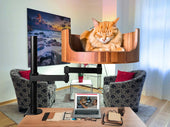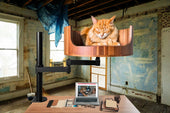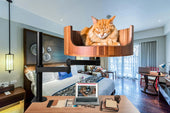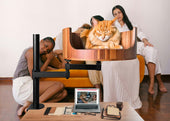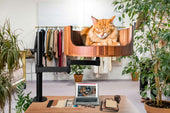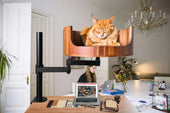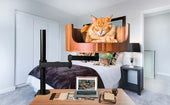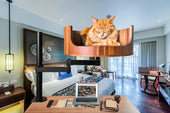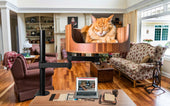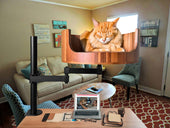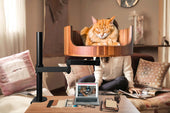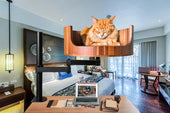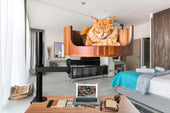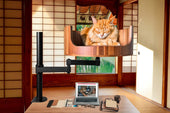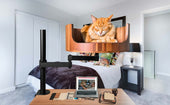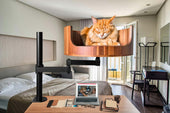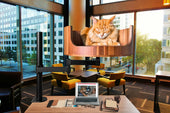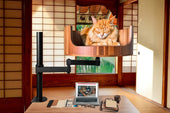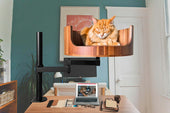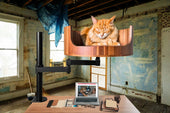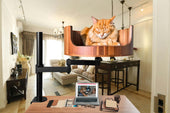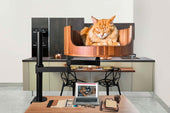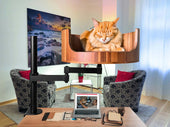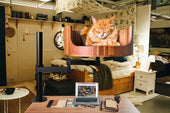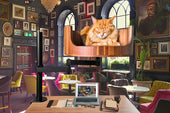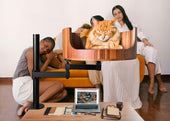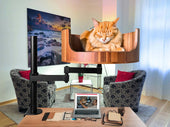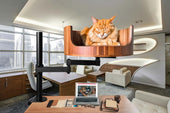
Know My Cat Breed: A Guide to Feline Identification
Share
Welcome to "Know My Cat Breed: A Guide to Feline Identification," where we explore the fascinating world of cat breeds and help you identify different types of felines. Have you ever gazed into your cat's eyes and wondered what breed they might be? Maybe you've encountered a unique-looking cat in your neighborhood and wanted to know more about its background. Whatever the case may be, this guide is here to provide you with the knowledge and insights you need to become a pro at identifying different cat breeds.
In this article, we will delve into the characteristics, behaviors, and physical attributes that define various cat breeds. From the sleek Siamese to the fluffy Maine Coon, each breed has its own unique traits that set them apart from the rest. By the end of this guide, you will have a better understanding of the different cat breeds out there and be able to confidently identify the cats you encounter in your daily life. So sit back, relax, and get ready to become a cat breed expert with "Know My Cat Breed: A Guide to Feline Identification."
1. Understanding your cat's breed can provide valuable insights into its behavior, temperament, and potential health concerns.
2. Different cat breeds have unique characteristics such as size, coat type, and grooming requirements that should be considered when choosing a pet.
3. Identifying your cat's breed can help you provide more personalized care and enrichment activities to keep your feline friend happy and healthy.
4. Mixed-breed cats can exhibit traits from various breeds, making identification sometimes challenging but still possible with expert guidance.
5. By learning about different cat breeds, you can better appreciate the diverse and fascinating world of feline companionship.
Understanding Cat Breeds
When identifying a cat's breed, it is essential to know the characteristics and traits that differentiate one breed from another. Each breed has unique physical attributes, temperament, and behavior patterns that set them apart. By familiarizing yourself with these distinctions, you can better recognize and understand the breed of a cat.
Physical Characteristics
One of the most noticeable aspects of cat breeds is their physical appearance. This includes features such as coat color and pattern, eye shape and color, body shape and size, ear shape, and tail length. For example, the Siamese breed is known for its striking blue almond-shaped eyes, while the Maine Coon breed has a long, bushy tail and tufted ears. Understanding these physical characteristics can help in identifying a cat's breed.
Temperament and Behavior
In addition to physical traits, cat breeds also exhibit different temperaments and behaviors. Some breeds are known for being affectionate and sociable, while others may be more independent and aloof. For example, the Ragdoll breed is known for its docile and gentle nature, making them great companions for families with children. On the other hand, the Scottish Fold breed is known for its laid-back and easygoing personality. Recognizing these behavioral traits can aid in identifying a cat's breed.
Common Cat Breeds
There are numerous cat breeds recognized by various cat associations around the world. Some of the most popular and well-known breeds include the Persian, British Shorthair, Siamese, Maine Coon, Bengal, and Sphynx. Each of these breeds has its own unique characteristics that set them apart from other breeds. By familiarizing yourself with these common cat breeds, you can improve your ability to identify different feline breeds.
Case Studies
To further illustrate the importance of feline identification, let's consider a few case studies. For instance, a veterinarian may need to know a cat's breed to determine potential health issues common to that breed. A shelter worker may need to identify a cat's breed to help with adoption efforts. By studying specific cases where breed identification is crucial, we can see the practical implications of knowing a cat's breed.
## Desk Cat Nest FAQ
### What is a Desk Cat Nest?
A Desk Cat Nest is a cozy resting spot for your cat that can be easily attached to the side of your desk, providing them with a comfortable place to relax while you work.
### Will my cat like the Desk Cat Nest?
Most cats enjoy having a comfortable spot to rest, and the Desk Cat Nest provides a secure and elevated space for them to observe their surroundings. However, every cat is different, so it may take some time for your cat to adjust to the new sleeping spot.
### How do I know if my cat breed is suitable for the Desk Cat Nest?
While the Desk Cat Nest can accommodate cats of various sizes, it is important to consider your cat's breed and temperament. Cats that enjoy climbing and being up high are likely to appreciate the Desk Cat Nest, while more timid or less active breeds may prefer a different type of sleeping spot.
### Can multiple cats use the Desk Cat Nest at the same time?
The Desk Cat Nest is designed to accommodate one cat at a time, but some cats may be comfortable sharing the space with a feline friend. However, it is always best to monitor their interactions to ensure that both cats are happy and comfortable.
### How do I clean the Desk Cat Nest?
To clean the Desk Cat Nest, simply remove the cushion and wash it according to the manufacturer's instructions. You can also wipe down the nest itself with a damp cloth to remove any dirt or hair. Regular cleaning will help keep the nest hygienic and comfortable for your cat.
In conclusion, choosing a Desk Cat Bed for your feline friend is a valuable choice for those seeking to better understand their cat's breed. The ergonomic design allows cats to comfortably lounge while owners research and learn more about specific breeds. With added benefits such as reduced stress and improved sleep quality, this cat bed is sure to enhance the overall experience of cat ownership and breed identification. Make the smart choice and invest in a Desk Cat Bed today for a happier and more informed relationship with your cat.



